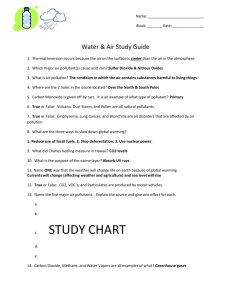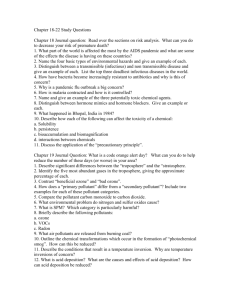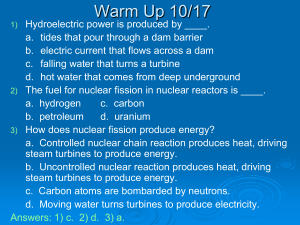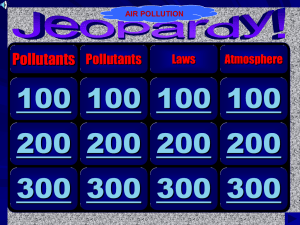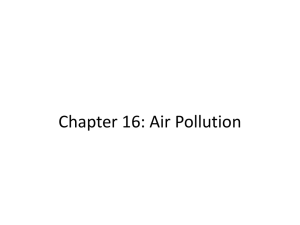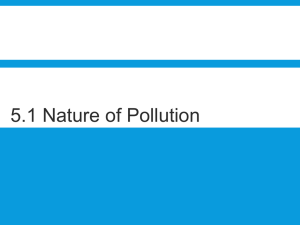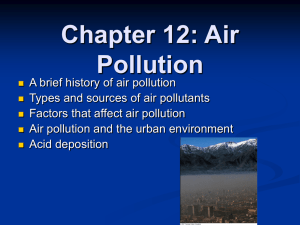File
advertisement
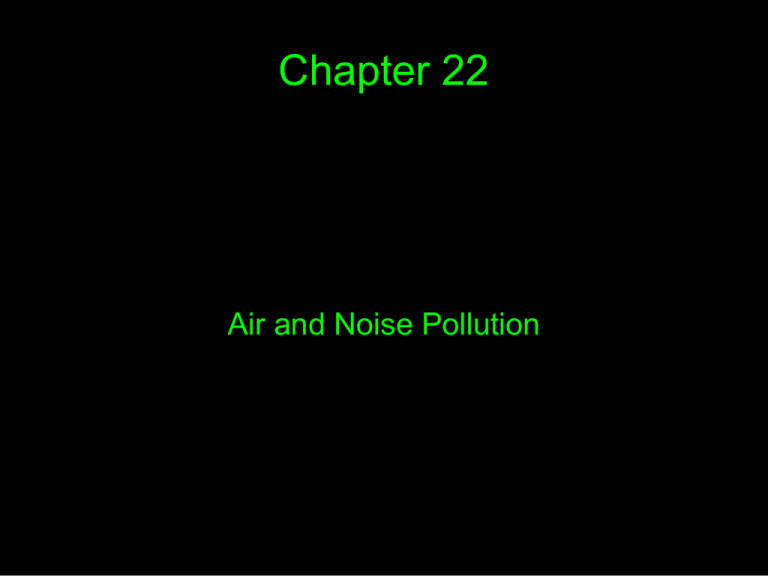
Chapter 22 Air and Noise Pollution 22.1 The Air Pollution Problem ● ● Harmful materials to the environment are called pollutants. Harmful substances released into the atmosphere are called air pollution. Evolution of pollution ● ● ● Air pollution is not a new problem it was first reported in ancient Rome. Then it become a widespread problem during the 1700's in the industrial revolution. There have been numerous cases of deaths from everyday industrial pollutants. Outdoor Pollutants • Tiny particles suspended in the atmosphere are called particles. • This can include traces of lead, iron, pesticides, fertilizers, and plant pollen. • These can be dangerous to people since it can be easily inhaled. Oxides ● ● These are the most common gaseous pollutants. They are made up from oxygen ad one other compound. They are formed from the burning of fossil fuels. Photochemical Smog ● This is a yellow-brown haze that is formed when sunlight reacts with pollutants produced by cars. ● ● Hydrocarbons- made from hydrogen and carbon most commonly a pollutant in the form of methane. A similar pollutant is called Chlorofluorocarbons made from carbon, chlorine, and flourine, they were used in refrigerators, air conditioners, and aerosol cans. CFC's destroy ozone. Ozone Depletion ● ● Ozone is a corrosive, poisonous gas. There is a layer 20 to 50 km above the Earth's surface. It blocks the sun's harmful UV radiation. Causes • CFC's do not break down in the lower part of the atmosphere. When it rises to the stratosphere it breaks down and releases chlorine and fluorine. This breaks down the ozone in these layers. Indoor Pollutants • Plastic, insulation, and cleaners give off harmful fumes. • The most harmful indoor pollutant is cigarette smoke. Radon Gas ● It is a colorless, odorless, radioactive gas that is given of when radium in soil breaks down. These particles can attach to air particles and be inhaled. Carbon Monoxide ● Carbon monoxide binds with hemoglobin (part of red blood cells) better than oxygen. This prevents any oxygen from attaching to the cells. 22.2 Air Pollution and Living Things ● Particles in the air have been linked to two very fatal diseases. Emphysema – a disease in which tiny air sacs in the lungs break down. Cancer-cells grow abnormally and without restraint. ● Cigarette smoke is the leading cause of both of these diseases. Plants and Air Pollution ● ● Chemicals such as ozone and sulfur oxides damage plants directly. The U.S. Loses 10 billion dollars worth of crops each year. ● The accumulation of pollutants in plants can disrupt the food chain and in extreme cases can kill grazing animals. Global Warming cont. • Global warming is the increase in Earth's average surface temperature caused by an increase in greenhouse gases. • The temperature may increase and cause sea levels to rise. This would cause some land to be under water. Sea water would invade groundwater systems. Global Warming ● ● The trapping of radiated heat by gases in the atmosphere is called the greenhouse effect. Some gases trap infrared radiation and heat up the Earth. These are known as green house gases. How Acid Rain is Formed ● Water in the atmosphere becomes acidic when it reacts with carbon dioxide forming carbonic acid which has a pH of about 5.6. 22.3 Global Effects of Air Pollution ● ● There are three major air pollution problems threatening the global environment: 1.) Acid Precipitation – rain or snow that is more acidic than normal precipitation ● This can damage trees and can cause lakes to become inhabitable. 22.4 Controlling Air Pollution • Natural processes can control air pollution: – 1. Precipitation – the most effective natural method of controlling air pollution. Pollutants are carried out of the air. This means that is placed somewhere else. – 2. Biological activity – many plants and organisms remove carbon dioxide from the environment. –3. Burying – when carbon is trapped under ground it eventually turns into fossil fuels. –4. Ocean – the ocean removes large amounts of carbon dioxide from the atmosphere. This is dependent on the temperature. Human Controls • 1. Cleaner automobiles - There are strict emission control standards for all automobiles. The only way to cut down on all the emissions is to quit using gasoline for fuel. ● 2. Power plant regulations – certain devices are now required to reduce the pollution in factories. 22.5 Noise Pollution • The unit used to measure sound intensity is a decibel. • Physical pain and severe hearing loss happens at anything over 120dB. ● Stress caused from loud persistent noise leads to severe health problems. • In 1972, Congress passed the Noise Control Act. This set standards for maximum noise levels.
